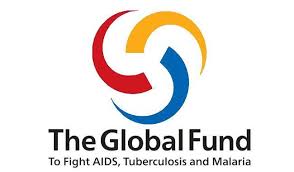The Global Fund to Fight AIDS, Tuberculosis and Malaria and Unitaid recently welcomed the World Health Organisation’s recommendation for the widespread use of a new class of mosquito net that uses two active ingredients – pyrethroid and chlorfenapyr. According to the Global Fund, the new net has demonstrated approximately double the protection against malaria provided by the standard pyrethroid-only nets in areas where mosquitoes have already developed resistance to pyrethroids.
Randomized controlled trials that were conducted in Tanzania and Benin over a two-year period demonstrated that the dual active ingredient insecticide-treated nets reduced malaria infections by approximately 50% among children between the ages of 6 months and 10 years.
“This shows how we can accelerate impact by embracing innovation,” said Peter Sands, Executive Director of the Global Fund. “The issuance of guidance by WHO is critical to influencing broad uptake of the new nets and to combat growing insecticide resistance across Africa, where nearly all malaria infections and related deaths occur.”
The World Health Organisation recently (14 March, 2023) published new recommendations as Guidelines for malaria, covering 2 new classes of dual ingredient ITNs with different modes of action.
According to WHO, the Pyrethroid-chlorfenapyr nets combine a pyrethroid and a pyrrole insecticide to enhance the killing effect of the net.
Pyrethroid-pyriproxyfen nets combine a pyrethroid with an insect growth regulator (IGR). The IGR disrupts mosquito growth and reproduction.
“These new types of nets were designed to have a greater impact against pyrethroid-resistant mosquitoes,” notes Dr Jan Kolaczinski, who leads the Vector Control and Insecticide Resistance unit within the WHO Global Malaria Programme. “By including two active ingredients in an ITN, the likelihood of mosquitoes being resistant to both is greatly reduced.”
According to WHO, over the last 2 decades, ITNs have contributed significantly to the progress seen in reducing malaria cases worldwide. A 2015 modelling analysis published in Nature suggested that ITNs drove most of the declines in malaria seen from 2005–2015, especially in moderate-to-high transmission areas. However, progress since 2015 has slowed.
The emergence and wide geographic spread of pyrethroid resistance among malaria-transmitting mosquitoes is the most recognized threat to the effectiveness of ITNs.
Other threats to this key prevention tool include insufficient coverage and access; challenges relating to the physical and chemical durability of nets; and changing behaviour of mosquitoes, which appear to be biting early before people go to bed and resting outdoors, thereby evading exposure to insecticides.
“Widespread use of insecticide-treated nets is credited with nearly 70% of the reduction in malaria cases achieved in Africa in the first 15 years of this century,” said Dr. Philippe Duneton, Executive Director of Unitaid. “But as mosquitoes have grown increasingly resistant to the insecticides, the efficacy of this critical tool has dwindled. Unitaid is delighted to contribute to efforts to quickly add a powerful new tool to our malaria-fighting arsenal.”
Growing pyrethroid resistance in mosquitoes is likely to be a major contributor to the plateauing progress against malaria seen in recent years. With additional setbacks caused by disruptions and delays to services from the COVID-19 pandemic, the malaria response is in desperate need of new tools to kick-start progress.




0 Comments